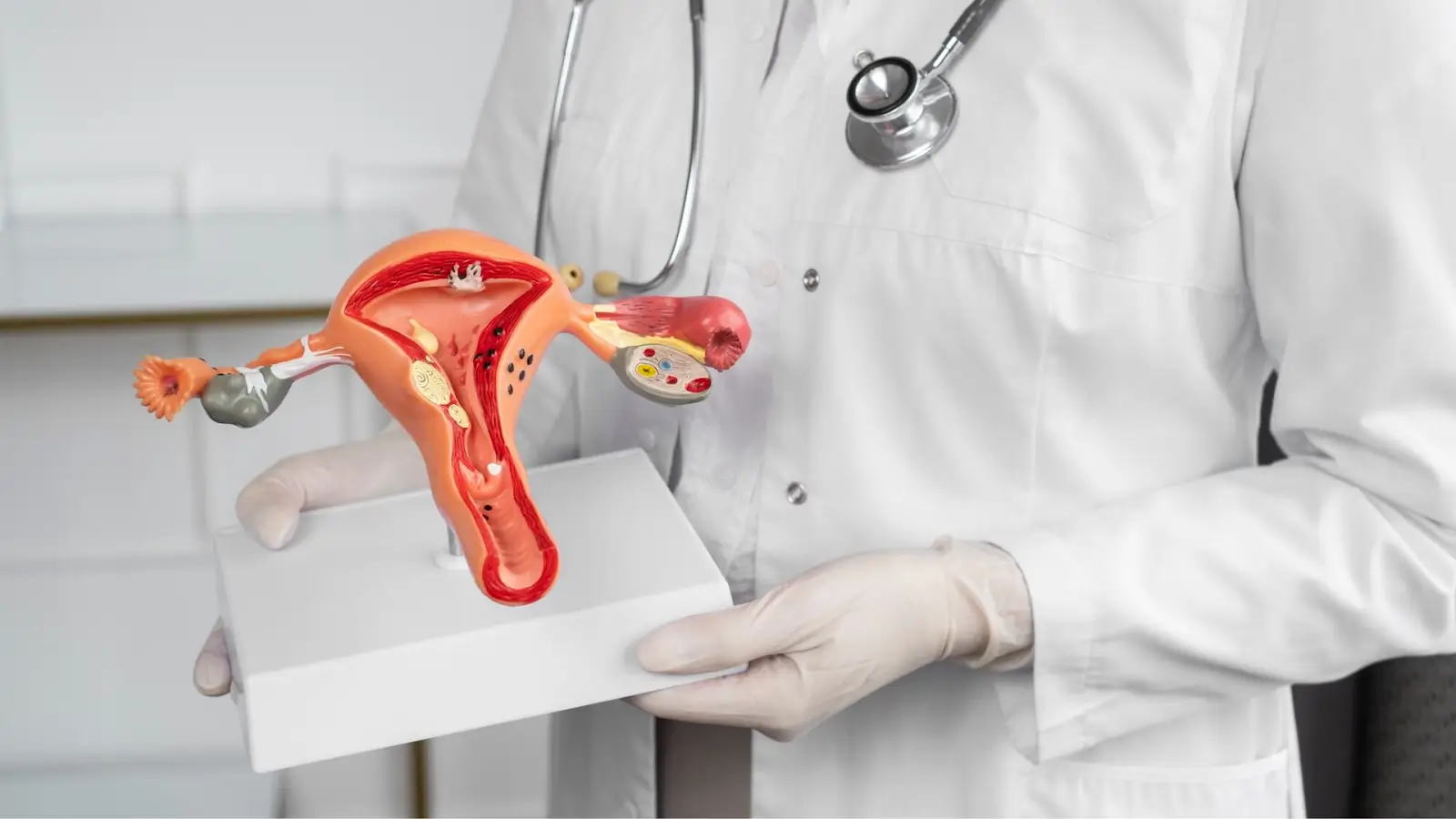
Unintended pregnancies remain a global concern, with an estimated 121 million occurring annually between 2015 and 2019. While contraceptive methods significantly reduce this risk, no birth control option is 100% effective. Among the most reliable choices, long-acting reversible contraceptives (LARCs)—such as implants—offer highly effective pregnancy prevention.
Nexplanon, a small rod inserted under the skin, is one of the most effective birth control implants available. It continuously releases progestin, preventing ovulation and thickening cervical mucus to block sperm. However, like all contraceptives, its effectiveness can be influenced by various factors.
In this article, we will explore whether pregnancy is possible while using Nexplanon, discuss its efficacy rate, and examine the factors that may impact its performance.
Key Takeaways
- Nexplanon prevents pregnancy by suppressing ovulation, thickening cervical mucus, and altering the uterine lining, making it highly effective.
- Proper insertion is crucial—incorrect placement can lead to hormone release issues, reducing effectiveness and increasing pregnancy risk.
- The implant is FDA-approved for up to three years; using it beyond this period may result in lower hormone levels and reduced protection.
- Certain medications, including anticonvulsants and St. John’s Wort, can accelerate hormone metabolism, potentially making Nexplanon less effective.
- If pregnancy is suspected, a test and medical evaluation are necessary. There is a higher risk of ectopic pregnancy, and removal is recommended if pregnancy is confirmed.
- Many users report high satisfaction with Nexplanon’s convenience, effectiveness, and minimal side effects, making it a popular choice for contraception.
About: Doctor Medica is your trusted supplier of top-quality dermal fillers, viscosupplements, and more for your medical practice. We offer genuine products from leading brands at the lowest prices. If you’re interested in ordering Nexplanon online for your practice, our sales agents at Doctor Medica can help.
Mechanism of Action

Nexplanon prevents pregnancy through three primary mechanisms, making it one of the most reliable long-acting contraceptives available. Its primary function is ovulation suppression, where the implant releases etonogestrel, a synthetic progestin that prevents the ovaries from releasing eggs. Without ovulation, no egg is available for fertilization, significantly reducing the likelihood of pregnancy.
Another key mechanism is cervical mucus thickening, which creates a physical barrier that makes it difficult for sperm to reach the egg. This added protection further lowers the risk of conception. Even if sperm successfully enter the reproductive tract, the thickened mucus reduces mobility, making fertilization highly unlikely.
Lastly, endometrial alteration plays a crucial role in pregnancy prevention. Nexplanon causes changes to the uterine lining, making it less receptive to a fertilized egg. Even if fertilization occurs, implantation is unlikely. These combined effects contribute to Nexplanon’s high contraceptive efficacy when used correctly.
Factors Leading to Potential Pregnancy
While Nexplanon is highly effective, certain factors can compromise its efficacy. Understanding these risks helps users make informed decisions.
- Incorrect Placement: If the implant is not inserted correctly, it may not release the desired hormone. This can happen due to improper insertion techniques or the implant’s migration from its original site. Regular checks by a healthcare provider ensure it remains in place.
- Implant Expiration: Nexplanon is approved for use for up to three years. Using the implant beyond this duration can reduce hormone levels, increasing the risk of pregnancy. Learn more about how long Nexplanon lasts through patient reviews and feedback,
- Metabolic Interactions: Certain medications, such as anticonvulsants or St. John’s Wort, can accelerate hormone metabolism, reducing Nexplanon’s effectiveness. To avoid potential interactions, users should inform their doctor about their medication.
Management of Suspected Pregnancy

If pregnancy is suspected while using Nexplanon, prompt clinical management is crucial for patient safety and well-being.
- Diagnostic Procedures: A pregnancy test is the first step. If positive, further evaluation is needed to rule out an ectopic pregnancy, a rare but serious complication more likely with contraceptive failures.
- Patient Counseling: Patients should be informed of the increased risk of ectopic pregnancy with implant-related failures. Healthcare providers must discuss potential risks and options for continued care.
- Implant Removal: If pregnancy is confirmed, removal of the Nexplanon implant is recommended. This prevents continued hormone exposure, which may pose risks to the developing pregnancy.
Case Studies and Research Data
Clinical research and real-world data highlight Nexplanon’s high contraceptive reliability. Studies report a Pearl Index of 0.02, indicating an extremely low pregnancy rate. This makes Nexplanon one of the most effective long-acting reversible contraceptives (LARCs) available today.
Clinical research and real-world data confirm Nexplanon’s exceptional contraceptive reliability, with studies reporting a Pearl Index of 0.02—indicating an extremely low pregnancy rate. This makes it one of the most effective long-acting reversible contraceptives (LARCs) available today.
When compared to other LARCs, such as intrauterine devices (IUDs), Nexplanon offers similar effectiveness but with a simpler insertion process and minimal maintenance. Unlike IUDs, which require placement inside the uterus, Nexplanon is implanted just under the skin, reducing procedural discomfort and potential complications. This ease of use makes it a preferred option for many individuals seeking long-term, hassle-free contraception.
Patient Experiences with Nexplanon
Many users report high satisfaction with Nexplanon due to its convenience and effectiveness. Here are two real-world testimonials:
- “I had Nexplanon inserted years ago and left it in for the full three years. My periods stopped completely, my cramps went away, and I didn’t gain weight. The only change I noticed was some moodiness, but I can’t say it was due to Nexplanon. I’m now on my second implant and plan to get another!”
- “I chose Nexplanon because so many of my friends had it. It was a great experience—I lost weight, my skin improved, and I felt great overall. The insertion was easy, and I barely noticed it was there. I was initially nervous because of negative reviews online, but it’s been amazing!”
These testimonials reflect the diverse experiences of Nexplanon users. While some people may experience side effects, the majority appreciate its low maintenance, effectiveness, and long-lasting protection against pregnancy.
Conclusion
Nexplanon is one of the most effective contraceptive options available, offering highly reliable pregnancy prevention. While the risk of pregnancy is extremely low, factors such as incorrect placement, implant expiration, and metabolic interactions can affect its effectiveness.
To ensure continued protection, users should stay informed about potential risks and maintain regular check-ups with a healthcare provider. This proactive approach helps maximize Nexplanon’s long-term reliability and effectiveness.
FAQs
1. Can you get pregnant on Nexplanon if it’s expired?
Yes, the risk of pregnancy increases if Nexplanon is used beyond its approved three-year duration. Timely replacement is essential for maintaining effectiveness.
2. Does medication affect Nexplanon’s effectiveness?
Certain medications, including anticonvulsants and herbal supplements like St. John’s Wort, can reduce Nexplanon’s efficacy. You must inform your healthcare provider about any medicines you’re taking.
3. How long does Nexplanon last before needing replacement?
Nexplanon is approved for up to three years.
4. What should I do if I suspect pregnancy on Nexplanon?
Contact your healthcare provider immediately for a pregnancy test and evaluation. If positive, further testing is needed to rule out an ectopic pregnancy.
References
Nearly half of all pregnancies are unintended—a global crisis, says new UNFPA report. United Nations Population Fund. https://www.unfpa.org/press/nearly-half-all-pregnancies-are-unintended-global-crisis-says-new-unfpa-report
Bearak, J., Popinchalk, A., Ganatra, B., Moller, A. B., Tunçalp, Ö., Beavin, C., Kwok, L., & Alkema, L. (2020). Unintended pregnancy and abortion by income, region, and the legal status of abortion: estimates from a comprehensive model for 1990-2019. The Lancet. Global health, 8(9), e1152–e1161. https://doi.org/10.1016/S2214-109X(20)30315-6
Frysh P. How effective are different types of birth control? WebMD. https://www.webmd.com/sex/birth-control/birth-control-effectiveness-chart
Jacobs M. Treatment duration for etonogestrel implant. AAFP. Published August 1, 2018. https://www.aafp.org/pubs/afp/issues/2018/0801/od3.html
Related Articles
Joanna Carr
Saxenda and Alcohol – Do They Mix?
Saxenda is a medication used for weight loss and is administered through injections.
Joanna Carr
Botox In Armpits: Causes, Treatment & Benefits
Interested in learning more about Benefits and Treatments options for Botox In Armpits? Browse Doctor Medica's comprehensive archive of blog posts.
Joanna Carr
Hyaluronidase Protocols: A Complete Guide for Safe and Effective HA Filler Reversal
Master hyaluronidase protocols for effective filler dissolution. Learn evidence-based dosing guidelines, timing considerations, and complication manag...


